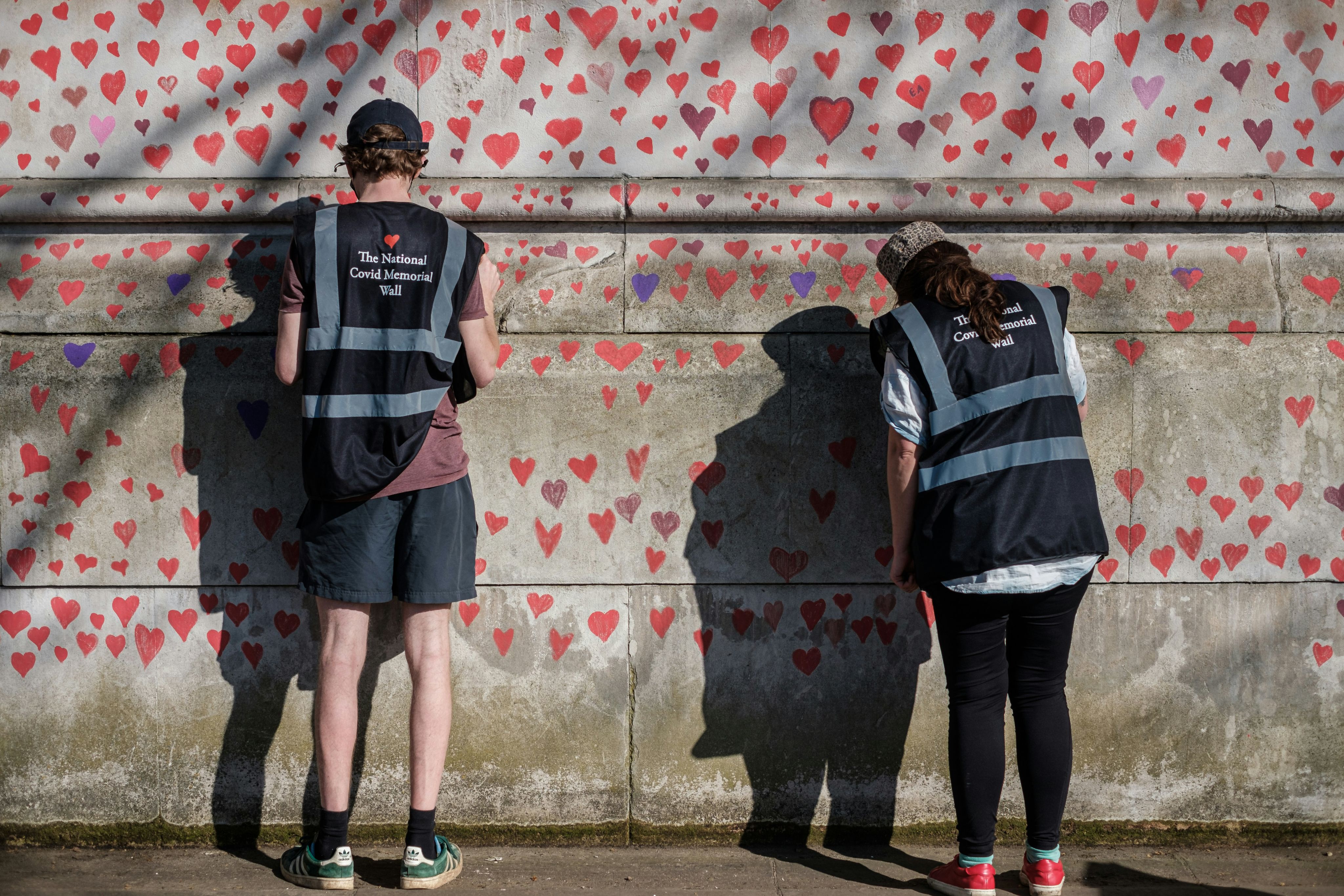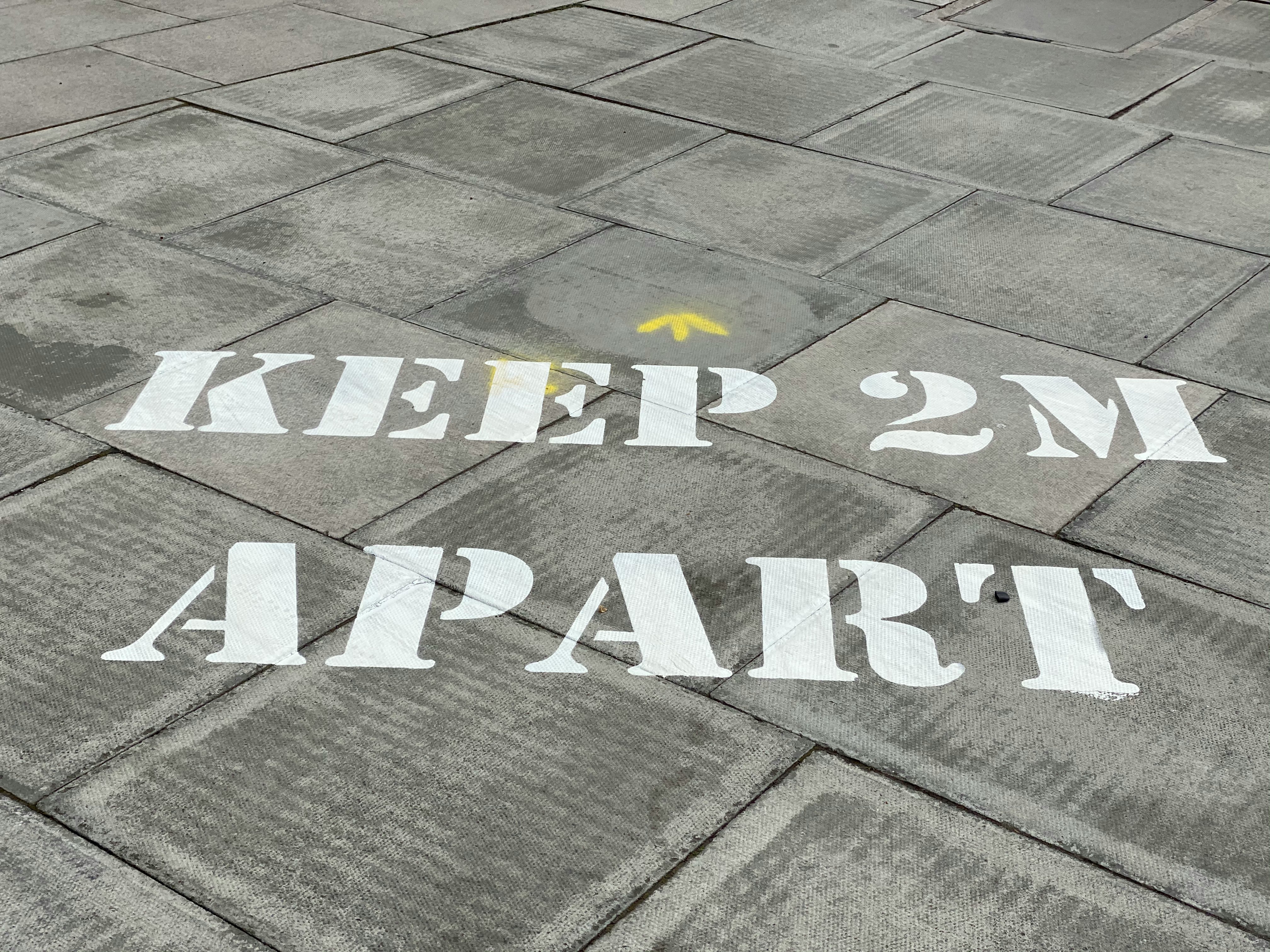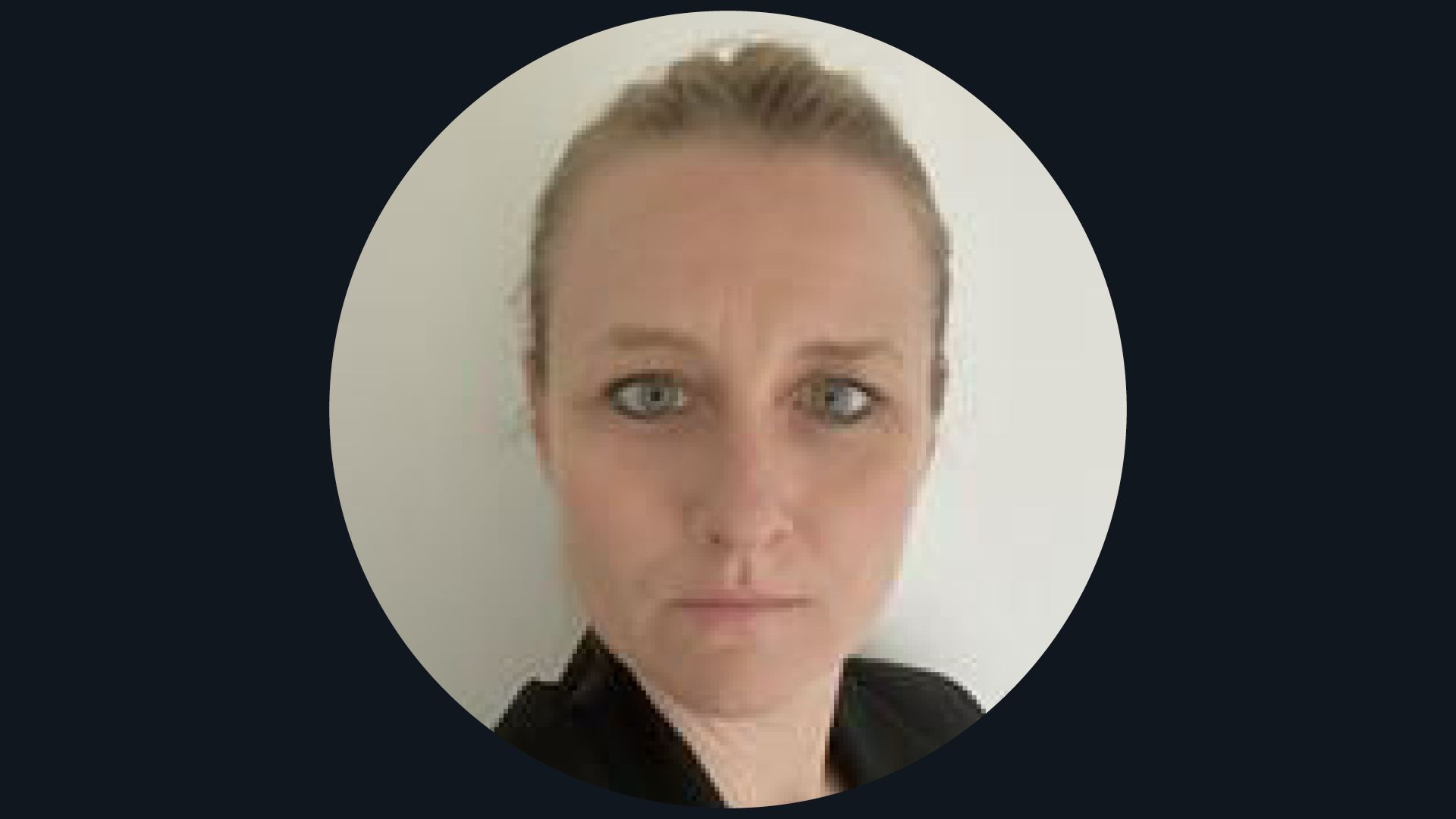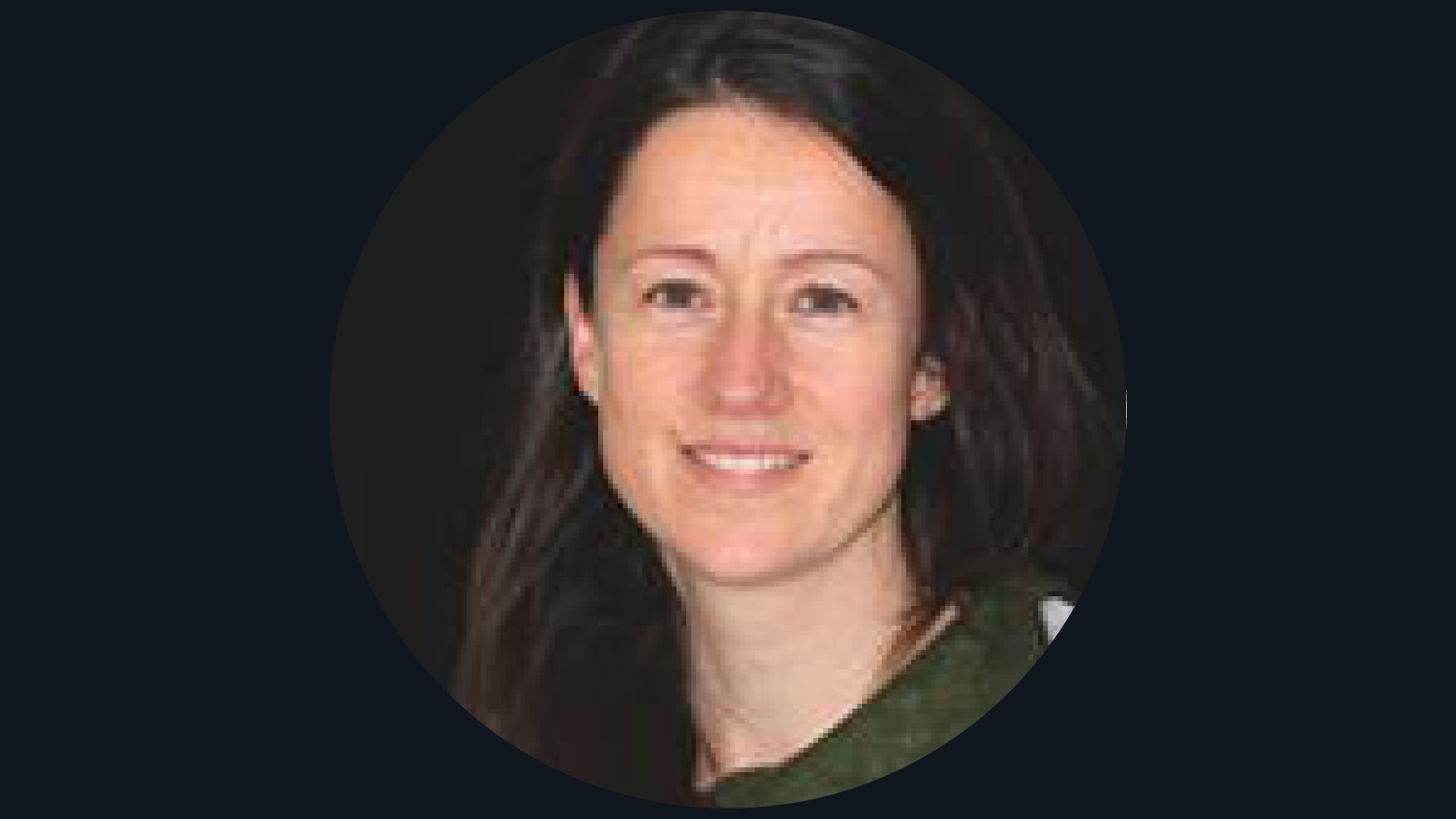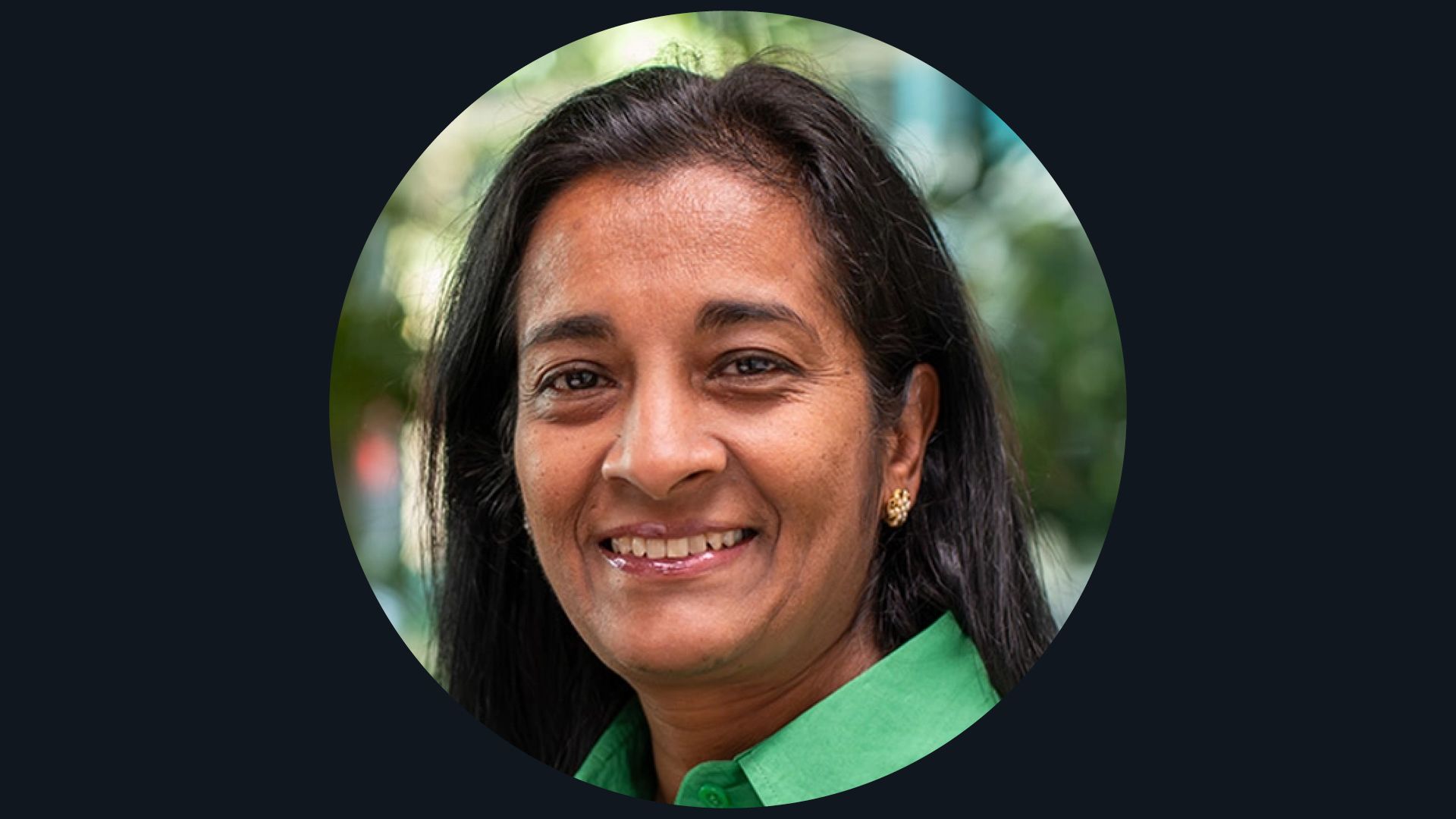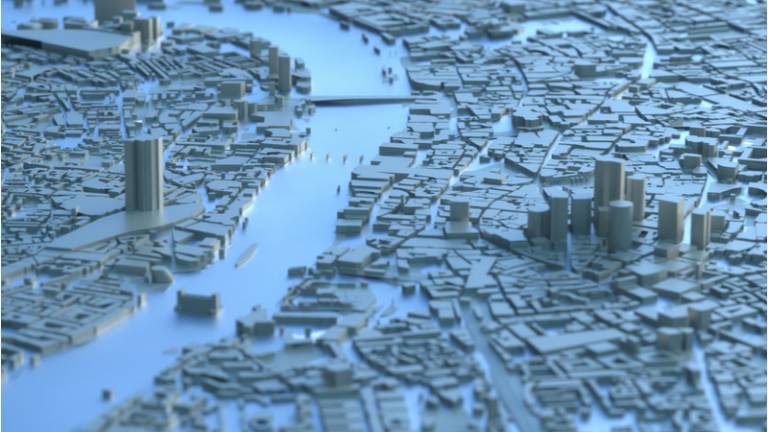Podcast: Planning fairer cities for global crises
How can urban planners tackle societal inequalities and build resilience in the face of crises like COVID-19?

For cities like London, the COVID-19 pandemic created major disruptions and deepened social inequalities. In this podcast we're exploring how urban planners can create fairer cities and build resilience for future crises.
Sowmya Parthasarathy, Director of Urban Design and Urban Planning at Arup, joins expert researchers Professor Lauren Andres and Dr Lucy Natarajan from The Bartlett School of Planning to discuss the lessons learned from COVID-19, and how planning differently and breaking down silos can help to create a fairer and more resilient cities.
Listen to the podcast
The Bartlett Review Podcast: Planning fairer cities for global crises
Photo by Ehimetalor Akhere Unuabona on Unsplash
Photo by Ehimetalor Akhere Unuabona on Unsplash
Photo by Sandy Ravaloniaina on Unsplash
Photo by Sandy Ravaloniaina on Unsplash
Photo by John Cameron on Unsplash
Photo by John Cameron on Unsplash
Transcript
Voiceover: This is a podcast for The Bartlett Review sharing new ideas and disruptive thinking for the built environment, brought you by The Bartlett Faculty of the Built Environment at University College London.
Sowmya Parthasarathy: We must invest in a mix of uses in our city centres. They can't just be places of work, but they must support arts and culture, education, potentially residential.
Lauren Andres: Despite all the trauma out of the pandemic, there are some positive lessons that we can draw out of it. And I think our role as built environment experts is really to engage into this.
Lucy Natarajan: We know climate change is a reality. We know inequalities exist, massive inequalities in this country. These are realities of this vulnerability that we know.
Lauren Andres: Hello everyone. In this episode of The Bartlett Review podcast, we're going to turn our attention to the question of how communities around the world respond and react to the impact of major disasters, like for example the COVID-19 pandemic. My name is Lauren Andres. I am Professor of Urban Planning at The Bartlet School of Planning.
I'm delighted today to be joined by my colleague, Dr Lucy Natarajan. Lucy is associate professor at BSP and her work focuses on the interface of publics and decision makers in the built environment in relation to strategic and large scale urban development. Lucy recently provided expertise to the UK 2070 Commission's work on spatial inequalities in the UK. She has also been involved in the inclusivity strand of the UN Habitat Professional Forums recovery work.
We are also joined by Sowmya Parthasarathy, who is Director of Urban Design and Urban Planning at Arup. Sowmya has been working across the globe, including in the UK, the US, the Middle East, and India. Her recent projects include the London Olympic sites and the revival of the Battersea Power Station. Welcome to you both.
Sowmya Parthasarathy: Thank you. It's a pleasure to be here.
Lucy Natarajan: Delighted to be here.
Lauren Andres: In this podcast, we are looking at the impact of the COVID-19 pandemic. Clearly the pandemic had unprecedented impact on people, on places, on policies, and what is clear with the pandemic is how much it was linked to intersectional burdens to social inequalities. What we are going to discuss today is what happened during the pandemic, what we learned from the pandemic, how the most vulnerable were impacted during the pandemic, and hence what it tells us about social justice, about trying to build more inclusive and fairer environments.
This is important for all cities across the globe. It is important when we reflect on the impact of the pandemic, but also other crises, like climate change. It is important for all type of cities, but especially for our city, London, and how we and our children are going to live in the future, in a city that is going to face a lot of disruptions. So really Sowmya when we are looking at the impact of the pandemic on cities, urban planning and social justice, what is your take on this?
Sowmya Parthasarathy: Lauren, you've mentioned the impact that Covid had on children and education and that's absolutely right. And we saw children in full-time education have their daily lives disrupted immensely across the world. There's also recognition that Covid impacts were felt very differently by different communities. So poorer, more vulnerable communities, small businesses, people who were self-employed, and key workers who did not have the option of remote working, were really much more affected than others from a health as well as an economic perspective. And all of this really had a profound impact on how we think about our communities, our cities, and planning in general.
So it's easy to forget from where we are today, the profound impact that Covid had on people. I think in response policy has changed. New ideas on how we build our cities have taken root, for example, the importance of nature in our cities, the idea of walking and active travel and the importance of that, the whole concept of 15 minute neighbourhoods that has really been propelled by what we experienced during Covid. The idea of tactical urbanism or meanwhile use, which is being agile in how we introduce uses on a temporary basis into cities. All of these concepts have been tried in very interesting ways in many cities and lots of lessons to be learned on how we can scale that up should we need to.
Lauren Andres: A lot of changes indeed and a lot of disruptions. Lucy?
Lucy Natarajan: Yeah, absolutely. And I very much resonate with what you're saying there Sowmya about the changes in patterns of use in people's daily lives. And it makes me think about some research I've been doing for the London Borough of Barnet on food security and the disruption that people face. It comes in different ways, three ways. So there's a disruption of food as a basic need, but I would like to say a little bit more about the way that it affects people's habits and eating patterns and the importance of that in respect of wellbeing in society. So in lockdown, as we know, it was very hard for people to access basic things that they would do normally, things that they really needed, because of loss of income as well as the inability to travel.
People's jobs were disrupted, the cost of living was creeping up. So it affected people in different ways. Some people weren't able to go to shops, and this was particularly true, for example, for mothers with children. Others were not able to shop online, had never done so before. And if you think about the changes in cashflow and how that might impact your ability to shop online, where digital sources of cashflow are needed, becomes very tricky for certain people. And we could think about frontline workers. Now they had even more work than normal and they were very much still dealing with this problem. I mean, they couldn't necessarily find what they needed in shops, partly because of panic buying and partly because of stores not being able to restock in the ways they normally did. So you can see the sort of urban processes all being disrupted, and of course it really matters, I think, that the normal processes were disrupted. We can also think about the social infrastructures changing the way that schools provide free school meals to certain children on low incomes. This really shows the importance of knowing the detail of the disruption.
Of course, you can't talk about London and the experience of living in London without mentioning how expensive it is to live in London because of the property market. I think it's important to say that the ability of people to cope with the shocks of the pandemic was different, very different, depending on their situation in terms of renting. So people spend a great deal of their income on rent or a mortgage. And during the pandemic where people's jobs became quite insecure people who would never have dreamt that they would need to go to a food bank suddenly had to.
And so the experience of being helped through crisis and shock can look very different depending what ward you're in, which part of London, and it's not necessarily as simple as north, south, inner and outer. Within boroughs, people were finding pockets of deprivation and new pockets of deprivation in wards. And the people I spoke to describe this as it becoming like the survival of the fittest, which I think is really interesting, this idea that the inequality which impacted carers and children more than others, and people with health impacts, they could see something of civil society unravelling and that the wellbeing impacts were highly gendered. Women were carrying a greater burden in most cases.
Lauren Andres: Absolutely. I mean the pandemic had dramatic impact on people. Sowmya what was the impact on built environment experts on how you were able to engage with local communities when we were all online or in periods of lockdowns?
Sowmya Parthasarathy: From an urban planner's perspective, Lucy, you talked about food and I think food systems, food logistics, movement of food globally. Obviously Covid exposed the vulnerabilities around that. But from an urban planner's perspective, I would say one of the most significant disruptions was to our patterns of mobility, how we move around. So our cities, for example, are designed to support commuters to and from work. Take London for example, lots of work in the centre of London, our tube systems quite radial, and people come in and out. And so when Covid hit that pattern was completely disrupted and transport for London for example saw an incredible reduction in demand of something like over 90%. And the legacy of that new ways of movement, I think is still here to stay. And while some of those old patterns of movement are returning, I think we will continue to have to get used to hybrid ways of working, hybrid ways of living. And just from an urban planner's perspective, the rise of the polycentric city rather than the very compact centralised city.
Lauren Andres: We discussed, Sowmya, the impact of this pandemic on people, on mobility, on how we work, how we move around, and Sowmya, you mentioned the 15 minutes paradigm earlier. I think this is really important when we reflect on how our perception of where we live and what we have and really looking into it and going back to the point here on social economic inequalities, we rely how not being able to access a green space, not being able to have enough space in your own home, put in place the real key inequalities in our societies.
I mean both Lucy and Sowmya you talked about education, you talked about food. This also links directly with the ability to have maybe outdoor space in your home, enough space at home for children to be able to learn from home. And it connects directly again with issue of inequalities. I mean, thinking about liveability and wellbeing, this has wider impact. And we know that this goes back to wider debates around, for example, air quality or air pollution, which I know resonates with your work, Lucy.
Lucy Natarajan: Yeah, absolutely. I've been looking at what's happening in the air quality, sort of, governance landscape in London, and I think people are trying to make positive changes in that respect. And actually human stories are really great drivers of focusing attention and getting people to grow areas of agreement that coalitions can form around. And in London, and it's a very sad story, but people are telling the story about Ella and she's the first child in the UK to have air pollution recorded as a cause of death on her death certificate, and that came about after multiple hospital admissions. And she was born healthy in south London until the age of seven when she started developing very severe asthma and was in and out of hospital for two years and then passed away, very sadly. Her mother was an incredible activist and she was aware of air pollution and the evidence was at her fingertips. And she fought for an inquest with expertise and in effect helped to prove and create the legislative backdrop that would be needed to put this on the agenda and get people together around this really important issue.
On the other hand, if we look at low traffic neighbourhoods, it's far more controversial and it introduces this resistance because it was introduced during the pandemic as an experimental traffic order. And the ways that it was introduced in different boroughs seem to have mattered greatly. So that for those who maybe haven't heard about low traffic neighbourhoods, this is where barriers, signs, bollards, planters, even gates can be used to filter out motorised traffic from primarily residential streets. But in terms of the resistance to that, there were two issues I think. And one of them was the public perception that this was to privilege the wealthy people who had these leafy suburban streets and that the motorised vehicles with their CO2 emissions would be pushed into the other streets where people like Ella and her mother were living. So this idea of the poorer Londoners not being at the heart of this, so getting the messaging right about the air quality really mattering to all sections of community matters.
Lauren Andres: I think it just highlights, I mean the importance of knowledge, the importance of information. I mean, we discussed the impact of the pandemic. I would like to turn now also on why and how the pandemic led to a lot of accelerations. And one of the key accelerations is really the shift to hybrid working, the importance of remote working. And here I'm really interested Sowmya in how you are approaching this on a daily basis and how your clients as well are approaching this.
Sowmya Parthasarathy: So Lauren, I'd like to answer that question by referring to a really influential piece of work that we did at Arup with a commercial property investor in Ireland called IPUT. And they commissioned us to work with them to do a study on hybrid working because they are a commercial office investor. And obviously as you can imagine with people not coming into the office so much, lots of people were downsizing their commercial real estate holdings. And we wanted to jointly explore what hybrid working meant for the future of commercial property. And our report was called workplace making. And essentially what that research basically concluded was that we needed to recalibrate our work, our life, and place: where we live; where we work. If we wanted to entice people back into the office, then the workplace can no longer be just an alternative space to work in. No one's going to go from home to another desk in the office when they could stay at home, particularly when there are barriers and time constraints to doing that.
So a workplace must be something that accelerates collaboration, it supports a digitally enabled workforce, so you have to give them something more than just the ability to work on their laptops. It needs to enable a social function as well. And so if we wanted to get people back into work, and I can say that we do want to do that, because while some amount of flexibility is absolutely here to stay, and it is important, I think for us to manage a work-life balance, I think we need to get back to working together and doing more face-to-face things. And so therefore, whether it's in our offices or whether in our clients’ offices, essentially designing office spaces to provide a little bit more than just a desk has become a really important trend.
We must invest in a mix of uses in our city centres. They can't just be places of work, dominant commercial uses, but they must support arts and culture, education, potentially residential, and then we must actually invest in having those green spaces and other places where people can enjoy. Can we use our parks and open spaces in such a way that they can be used by more numbers of people? And you layer programmes on it. So many of these ideas I think we do need to implement, and all this is thinking that's come from what we learned from Covid, and what really helped our communities and our people stay healthier, not just free from infectious disease, but also healthier in terms of mental health and active lifestyle.
Voiceover: This is The Bartlett Review Podcast – sharing new ideas and disruptive thinking for the built environment.
Lauren Andres: It is great to hear that we are, and we have, learned a lot from Covid. And despite all the trauma out of the pandemic, there are some positive lessons that we can draw out of it. And I think our role as built environment expert is really to engage into this. I'm just wondering, Sowmya, what is your take on how the risk of the pandemic is connected to other risks like climate change, but also how this connects to how we are approaching urban resilience and how our sort of past definition of resilience has been challenged by what we lived during the COVID-19 pandemic?
Sowmya Parthasarathy: Yeah. I mean, some will say that the pandemic was not an unexpected event, however, it did catch us unawares, and this is the definition of such risks, they'll creep up on you. And therefore I'm really glad that you brought up the topic of resilience because what's the definition of city resilience? It's essentially the overall capacity of a city, be it the citizens, communities, institutions, businesses, systems, to survive, adapt and thrive no matter what kinds of chronic shocks or stresses they may experience. So you often, when you talk about resilience, you talk about shocks and stresses. Now typically before, planners took an urban sort of risk management approach, which would be to identify a certain risk and then plan for it. But what we are seeing more and more, be it pandemics or climate change, is that these shocks and stresses are becoming more unpredictable, the scale of which is also becoming unpredictable. And what cities need is not just preparation for specific risk events, but a resilience to a wide range of known and unknown risk.
Many of you will know that Dubai recently had an incredible flood that put the city out of commission for a few days. Just three days ago there was a news that Delhi hit temperatures of 52.3 degrees. I grew up in Delhi, it was hot, but never that hot. So we are clearly seeing certain risks, climate-related risks, coming that will have a huge impact on how we design our cities and our infrastructures. Coming back to London, I mean, there've been examples here of flooding. We know that temperatures are rising in London as well. And what does that mean for how we think about equipping ourselves here for the future? So one of the points I would very much like to make is that of designing infrastructure in a more resilient way.
So I know in Arup, for example, if we are looking at anything where we have to make an assumption about rainfall or water, we add a 30% uplift for climate change. It's not it in the code, but we do add it because you want to design for a future climate. Similarly with buildings, I mean a lot of our buildings that we have in London are going to remain for the next 30, 40, 50 years or even more. How do we retrofit those buildings to be suitable for future climates? How do we think of insulation? How do we think of a number of things like this, which we will need to do? So even from a practical technical viewpoint, we have to think about resilience and designing for future climates.
I would here like to make a plug for technology. We are, through AI and some digital tools, we are really enhancing our ability to understand what we need to do. So a recent tool, for example, that we've developed is called U Heat. And it takes city data, satellite data with a little bit of AI, and it figures out, it maps a city for where the hot pockets are. So rather than applying new solutions to where we don't need, we can actually identify places in the city where we need to target specific interventions. So I think using tools, recognising that we need to design for future climate, and developing organisational structures to make that happen, that is our challenge in London and in other cities.
Lauren Andres: And this testifies really from commitment and leadership and clear vision in that respect, which is absolutely brilliant. I would like to turn a little bit on how us as academics, but also how politicians really, we are often criticised sometimes - or often - to be only preparing for the crisis that just happened rather than anticipating the one that is yet to come. And in that respect, Lucy, can you just tell us a little bit about the political nature of planning, but also the political nature of risk mitigation and hence resilience?
Lucy Natarajan: Yeah, absolutely. And I do think that thinking about shocks and stresses has to be seen in the context of the vulnerabilities that exist, that pre-exist. We know climate change is a reality. We know inequalities exist, massive inequalities in this country. These are realities of this vulnerability that we know. And so the preparedness not matching up to the challenge. I do think you're right, Lauren, there's politics there that can help explain it. And there is, for example, a lot of activity at the minute around looking at inequalities and including the UK 2070 Commission that you mentioned in your introduction, which is a cross-party group, and it includes politicians, business leaders, academics, and people are looking at inequalities and lobbying for action and preparedness and adaptations. And because that group can work outside of the high politics of the political system, they've actually managed to get quite a lot done in terms of preparing strategies and bringing in coalitions of people who would seem to be oppositional. Not just what could be learned from the experience of the recent pandemic, but scoping out other things that may or may not happen. So looking at this in the UK, oftentimes the plans that I've mentioned, the ULEZ, the LTN, they don't appear to be acceptable, but there is a wider public backing, a history of changing the congestion regime and there is a cultural fit of debating it hotly in the media. So that's how we are doing our politics, this sort of everyday politics.
But there's a politics around the practises of urbanism. There's a very clear focus on planning as a kind of a punching bag for problems. So very mistakenly planning is often portrayed as a licensing for development and conflated with the top-down forms of control where it can actually be operationalised in different ways collaboratively. It can be emergent. And planning can also be about creating visions. Not saying it always is, but it's about looking for the ways that we can do politics better. So really, I mean when it comes to the politics of adaptation, I think there has to be room for the state and there has to be room for experts. And you are right, we do need to be looking to the future as well as the past, but there also needs to be a form of alliance building around the ways that we bring together strategies and support for them over the long term.
Sowmya Parthasarathy: Yes, Lucy, really well said. And absolutely I think political vision and political support is crucial to what we need to do in the future. But I'd like to add something to that. More and more, the problems that we are facing, be it pandemic recovery or climate change adaptation or mitigation, are complex problems that have to be thought of and solved in a different way and it needs holistic systems thinking. And I find that cities who take a lot of these decisions certainly in planning, are typically structured in a way that doesn't easily allow for systems thinking to take place. So they're structured as separate departments and that really favours siloed thinking and it's not possible to plan for long-term resilience in that way. So how do we, even at the governance level of institutions that are thinking of solutions effect change that prioritises coordination and joining the dots across various city functions, transport, health, land use, energy, water. We all know that they're all related to each other, but how do we actually solve problems together? I mean, I often think that transport departments will do their thing, health departments will do their thing, but we all know how critical health and transport are in terms of connections. You talked about air quality, a lot of air quality pollutants can come from transport, but why can't funding outcomes, planning actions, tasks, be done jointly? And so I would say political vision is really important, but I hope it helps to restructure the machinery of implementation to allow that to happen in a systemic way.
Lauren Andres: I think this is absolutely crucial. I think this idea of breaking silos and providing an integrated, inclusive, non-siloed approach to crisis preparedness and resilience, that really should be sort of the way forward. And we need to think about this within a political context, within a governance context, within also sort of cultural context. And Lucy, you were mentioning the importance of cultural context earlier. I think we need to remember as well that across the globe societies have a different approach to risk, to how they approach risk, but also in relation to this, how they approach uncertainties and governance, and also how they approach the idea of permanence but also temporary. And I think a lot of the principles around really resilience and breaking this issue of very siloed approach is also how we are engaging with the idea of adaptability, adaptable cities and our ability really to embrace the uncertain and not being afraid of it.
I think on this, and we're getting very close to the end of our podcast, I think it would be good to just reflect on a couple of examples. And I would just like to mention here, going back to both of your points around really how important it is for people to get together and to think outside of their disciplinary boundaries, but also their scheme of expertise. If we are looking at what happened in North America and especially in the US, in many cities across North America, streets became places where people could exercise, could socialise, could just meet the neighbours. And this was done through schemes called, in some cities, Open Streets, with all the same principle of closing streets temporarily, either temporarily during the day or temporarily across the year. So for example, Friday, Saturday, Sunday between March and October for example. And what is really interesting here is how it's changed the dynamic of American cities and typically downtowns.
It has managed to revive some areas, for example in Manhattan in New York, but it has also spread to other neighbourhoods. And again here just citing New York, when you're looking at the Open Street schemes, not only it has spread in Manhattan, but of course in Brooklyn and both are the most sort of wealthiest areas in New York. But interestingly enough as well, it has spread in Bronx, in Queens where you have very high level of deprivation. And here really this shift on how a simple thing like a street can be changed and can provide really the space for people to be able just to live their everyday life, I think is really fascinating and it is really highlighting the importance again of this flexible, adaptable thinking of really giving different users to spaces and to infrastructures in our cities.
And I would like you both to reflect on some of the key examples we could still keep in mind and learn from, especially if we want to engage with this issue of resilience, crisis preparedness and really getting in a way stronger and also creating a fairer society in the future.
Lucy Natarajan: It's so great what you say Lauren, and I think because it's really an example of how civil society is often where new ideas, new things that work are put into play and new practices are snowballed from that point. It also, it taps into, there's a world of interest at the minute in what is termed social infrastructures. So not just schools, hospitals and so on, but the ordinary everyday relationships and community hubs and spaces and parks and everything like this. But I think that if we look at what happens where local community groups start up collective action, they're doing it in a way that exactly speaks to what Sowmya says about needing work in a systemic way. So what they were doing was sharing, they were sharing kitchens, they were sharing electricity, water, amenities in the built environment, and they were creating this system that worked for them better in a very local small scale way. But there are ideas there that can be supported and scaled up. There's an expertise within civil society as well. They really know places deeply. And actually I think that makes them ideal partners if you want to make change in the built environment, whether you're government, institution or an urban expert. So actually the international organisations appreciate this very much. The UN Habitats Professional Forums Roadmap has got a proposition three, which is greater engagement with communities in line with an international framework for participatory democracy. Let's hope we see that one day.
Sowmya Parthasarathy: Some examples from me, you spoke about the New York example and the US actually did really well in repurposing some of their streets during the pandemic. Milan Open Streets actually was a wonderful programme where they converted 35 kilometres of streets into cycle paths. And cities across the world, including London, saw parking lanes and pavements repurposed for pop-up cycle lanes or even outdoor dining when that was allowed. Then there were other examples. So for example, a care box is a small modular healthcare unit that was developed that could go places instead of people actually going to healthcare places, mobile healthcare took on new dimensions during Covid.
Denmark I think had a really incredible way of dealing with their schools. So I think in Denmark they didn't completely close schools, but they found ways to reopen education in museums, in parks, and even in graveyards. So I think there's so much we can do and from a planning urban design perspective, what the lesson is that we have space, they're not, they're not single use space, they're multi-use spaces and they have a temporal dimension. You can layer things onto them. So how can you design your places, your large buildings, your public buildings in a flexible way? Because you never know what you might need to use it for a period of time at some point. And I sometimes think of the Olympic Games or the Expo or big events like that where cities somehow quickly transform to have something else happening. So why can't we learn from those kinds of mega events and use that kind of thinking to repurpose our cities and communities for other uses when we need them.
Lauren Andres: A lot of creative thinking, and I think we are lucky to be in this built environment field because we have this power to experiment and to try to think out of the box and what you both have been flanging up is this importance of thinking about making cities differently and how these issues of adaptable temporary urbanism, typically, or tactical urbanism, how we call it, really is opening new areas for us to think about cities differently and to make them more liveable and more prepared in case of future crisis.
We are at the end of this podcast, so I would really like to thank you both for your amazing thoughts and for the fantastic discussion. I would like also just to refer and give you a bit more information about where you can hear more from us and from what we're doing. So you can visit The Bartlett School of Planning website at ucl.ac.uk/Bartlett/Planning, and we are also on Twitter at @UCL_BSP and also on LinkedIn The Bartlett School of Planning UCL. Thank you Lucy again. Thank you Sowmya again. It was absolutely fantastic to have you both.
Sowmya Parthasarathy: Thank you, Lauren. It was a pleasure.
Lucy Natarajan: Yeah, very glad to be part of this. That was a really interesting discussion.
About the speakers
Professor Lauren Andres
Professor of Planning and Urban Transformations, The Bartlett School of Planning, UCL
Dr Lucy Natarajan
Sowmya Parthasarathy
Arup Fellow and Director of Urban Design and Masterplanning, Arup
Learn more about urban planning
The Bartlett School of Planning at UCL is one of Europe's leading planning schools. We offer a unique hands-on learning environment for students guided by urban planning experts and practitioners at the forefront of our field.
Podcast produced by Adam Batstone
© UCL The Bartlett 2024

